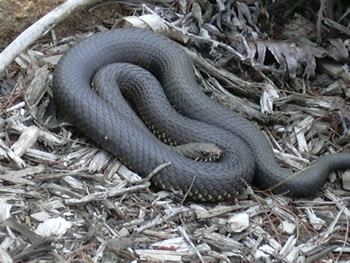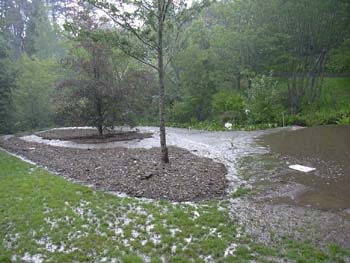Environment
Bushfire hazard
The Blue Mountains has a history of severe bushfires which have caused loss of life and major damage to property over the years. The Braes shares a common boundary with the National Park extending for approximately 200 metres. Accordingly it and the surrounding residential properties are vulnerable to bushfire hazard by reason of their position. No fire trail clearance from the boundary has been undertaken in the National Park. Consultation between the National Parks and Wildlife Service and the Council and The Braes management should be undertaken in regard to this.
The property is also vulnerable by reason of the types of trees and shrubs in the heritage garden. The entire property requires constant bushfire hazard reduction and this has been incorporated in the management program. The Council and Bushfire Service guidelines for this are used as a guide for appropriate action.
To ensure adequate supplies of water for bushfire control, a bore has been sunk in the northern garden area to act as a safety precaution in the event that the dam resources were exhausted in supporting community protection. This would be available to supplement the water stored in the ponds on the Gordon Creek and lying in the wider parts of The Braes Creek all of which would be available for firefighting.

View through the garden to untamed National Park — no significant bushfires have been recorded for several years.
Wildlife
Native fauna is abundant in this area. The bird population on the property is extensive. We do not always welcome the growing white cockatoo population which has migrated from the drought stricken west. They damage young plants of all types.
The frog and yabbie population in the creeks are active and also appear to be breeding well. Reptiles common in the Blue Mountains such as the red-bellied black snake and the tiger snake are also seen from time to time. Bandicoots make holes in the lawn looking for grubs and beetles.

Funnel web spiders are ever present. Foxes invade the property and are difficult to keep out.
Our gardens are regularly dug up by foxes following the use of blood and bone and manures.
Erosion
 In 1996, the main areas of serious erosion were in the creeks themselves.
In 1996, the main areas of serious erosion were in the creeks themselves.
The banks were not stable and were damaged by run-off from various parts of the higher ground (within and beyond the property).
Agricultural drainage pipes and an extensive network of rubble drains have been installed on the slopes in all garden areas and work goes on to keep the creek banks stable.